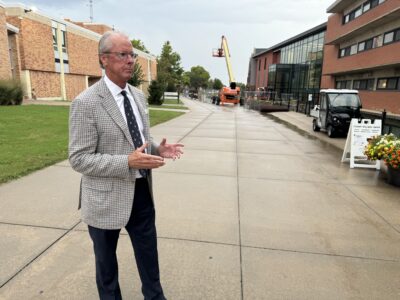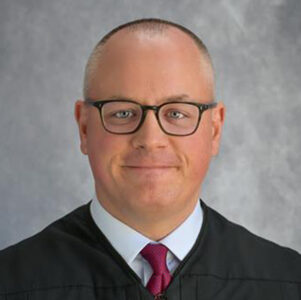Immigrants reshape U.S. as reflected in Garden City
Garden City ? Your home can be your birthplace. Or where you raise a family. Or where you bury your kin.
For a growing number of immigrants, home is far west Kansas in a city of 28,000, a world away from Mogadishu, Mexico City and Myanmar.
It’s where women in burqas stroll down a Norman Rockwell Main Street that is festooned with early Fourth of July banners. And where a Buddhist temple sits alongside grocery stores selling Mexican soft drinks and 50-pound bags of jasmine rice.
“This is my home. I want to become American,” said Abshiro Warsame, a Somali woman who works the late shift at the nearby Tyson beef packing plant.
Warsame came to the U.S. seven years ago, after her husband was murdered. A U.S. flag hangs in her small, shared flat. She’s studying English and Spanish.
By 2050, the Census Bureau predicts, the United States will have a new ethnic minority: non-Hispanic whites. Already, non-Hispanic whites are a minority in California, Texas, New Mexico and Hawaii, as well as in about 1 in 10 U.S. counties.
America’s future arrived early in Garden City. New census numbers show that non-Hispanic whites now account for just under 50 percent of Finney County’s 42,000 residents. Hispanic residents — who may be of any race — make up another 45 percent, with African-Americans, Asian-Americans and a variety of immigrants rounding out the rest.
The county is the latest in Kansas where non-Hispanic whites are the new minority.
According to projections, the 2010 U.S. Census will show non-Hispanic whites as the minority in as many as four Kansas counties: Finney, Seward, Grant and Ford. All are in southwestern Kansas. Non-Hispanic whites for years have been a minority in Wyandotte County, with significant African-American and Hispanic populations.
Immigration is among the reasons for the shift. Across the nation, immigration is challenging communities. Schools are searching for money to hire interpreters. Governments are struggling to integrate newcomers. Residents are adapting to neighbors who look, cook and speak differently.
Some people are pushing back. Arizona sparked a political firestorm earlier this year by passing a law to crack down on illegal immigration. Late last month, residents in Fremont, Neb., approved a law prohibiting businesses and landlords from hiring or renting to illegal immigrants.
But the changes may be inexorable. The non-Hispanic white population is aging and its birth rates falling. Hispanic birth rates are rising. So is legal immigration.
Meat-packing centers such as Garden City offer an attractive destination during a down economy, with plentiful jobs that require few skills and little training.
Like their predecessors, immigrants bring their own cultures. In May, Somali residents ruffled some feathers in Garden City after they requested a Muslim-only section in the city cemetery for religious reasons.
“This is our home now,” said Abdulkadir Mohamed, a Somali Muslim and translator at the Tyson plant who moved here in 2006. “But we need a place for us in the cemetery.”
While most in town are handling the religious differences well, the request touched off a debate that exposed some holes in the city’s seemingly strong ethnic tapestry.
“We’ve been too politically correct for too long,” said Leonard Hitz, a former Marine, retired banker and self-described cowboy poet. “If you want to come to this country and be an American, you’re welcome. But learn the language and assimilate.”
While other rural Kansas communities see populations dwindle and economies decline, Garden City is growing.
“This community doesn’t look like it once did in the ’50s and ’60s,” said former Mayor Nancy Harness. “But you know, the communities that look the same way they did back then? They’re all dying. These people bring fresh blood. They bring children.”
• • •
Lunch break at the Tyson plant erupts into a riot of language and color.
Tall Somali women glide by in flowing red and green gowns. Groups of tired-looking men chat in Burmese — one of the 14 languages spoken in the plant.
Wages start at $12.30 an hour, and it’s tough, bloody work. The plant has long relied on immigrant labor willing to do it, according to plant manager Paul Karkiainen. Tyson hires interpreters to translate. Lunchroom signs are posted in Spanish, English and Vietnamese.
“We probably could add a few new ones,” said Jonathan Galia, a Baptist minister who works as the plant chaplain.
All Tyson plants employ chaplains such as Galia, who minister to workers and help integrate them into the community. He left his native Philippines 17 years ago. Now a U.S. citizen, Galia worked as a hospital chaplain before taking the job at the plant.
“You have to reach people where they are,” Galia said of his unusual parish.
• • •
Garden City has been going about the business of integration for generations.
The area’s first immigrants were white settlers who displaced American Indians. The railroad and a sugar beet plant attracted Mexican immigrants looking for work.
Over the years, they and their descendants learned English, became U.S. citizens and started businesses. Now, three or four generations later, the older immigrants watch as new immigrants from even farther away follow in their great-grandparents’ footsteps.
“You see them everywhere,” said Yuri Chavez, a lifelong resident of southwest Kansas. “But they don’t bother people. I believe if you leave other people alone they’ll leave you alone.”
The city’s long history with immigrants may make it more welcoming today, experts noted. Kansas State University cultural anthropology professor Janet Benson researched immigration in Garden City in the ’80s and ’90s and was struck by what she calls the city’s “quiet accommodation.”
“People get used to each other,” Benson said. “Our ancestors did. One of the ways they did it was through the legal system and the political arena. As people become citizens they learn about their rights. They vote. And that’s how we change as a people.”
Omar Flores moved to Garden City eight years ago from Chihuahua, Mexico. He said he rarely encounters anti-immigrant hostility.
“This town is different,” Flores said while taking his 2-year-old daughter, Adaliz, to a local carnival. “They’re more welcoming. I think they’re used to it.”
School Superintendent Rick Atha agreed.
“Diversity is not new here. It’s third-, fourth-generation,” Atha said. “There’s more of a tendency to embrace rather than reject or deny.”
Immigration posed some of the toughest challenges to Garden City’s schools.
Imagine the challenge of teaching 3,000 schoolchildren who speak a language other than English. The district, which has 7,400 pupils, had to hire more English language teachers. Even the cafeteria menu was changed to offer familiar foods.
“It’s a real challenge, but I consider it more of an opportunity,” Atha said. “Because if a teacher really wants to make a difference with kids, Garden City is a great place to teach.”
Police also are coping with a rise in crime.
Several years ago, Garden City briefly became one of the more dangerous cities in Kansas because of drug-fueled gang violence. Crime rates have stabilized now, but in May police met with representatives of each ethnic group to discuss a new strategy that will place an officer in each neighborhood.
Several ethnic leaders told police that immigrants sometimes feel uncomfortable contacting the authorities.
“Some of these people have no concept even of democracy, or of law enforcement,” said Galia, Tyson chaplain. “When you see a Somali shake hands with a police officer, it’s a very special thing.”
• • •
A few miles east of the Tyson plant, several Somali men sit in the shade of a tree, smoking and discussing a recent World Cup soccer match. Since Somalia has no functioning government, let alone a World Cup soccer team, the men root for South Africa.
Across the street, Burmese children ride bicycles and run barefoot. Most are Karen, a minority that for years fought for independence in Burma, now known as Myanmar. Thousands live in refugee camps along the Thai border.
Now, hundreds live here in a bare-bones apartment complex that rents two-bedroom units for $500 a month.
Ko “Kujo” Kyaw rents one of the apartments for his wife and three children. Until last year, the 39-year-old Burmese immigrant had one of the toughest jobs at the plant. Using a long blade, he would slit the throats of cattle to drain their blood immediately after slaughter.
One day last year, he sliced a finger with his knife. Surgery repaired the injury, but he said he lost his job anyway. Now, he works as a makeshift taxi driver, making a few bucks driving other immigrants around town.
Like many Americans today, he worries about what will happen if he can’t find regular work. He doesn’t want to leave Garden City.
“I feel like I belong here,” he said. “Muslim, not Muslim — it doesn’t matter,” he added. “Here in a democratic country, it doesn’t matter. Here we are all the same.”






